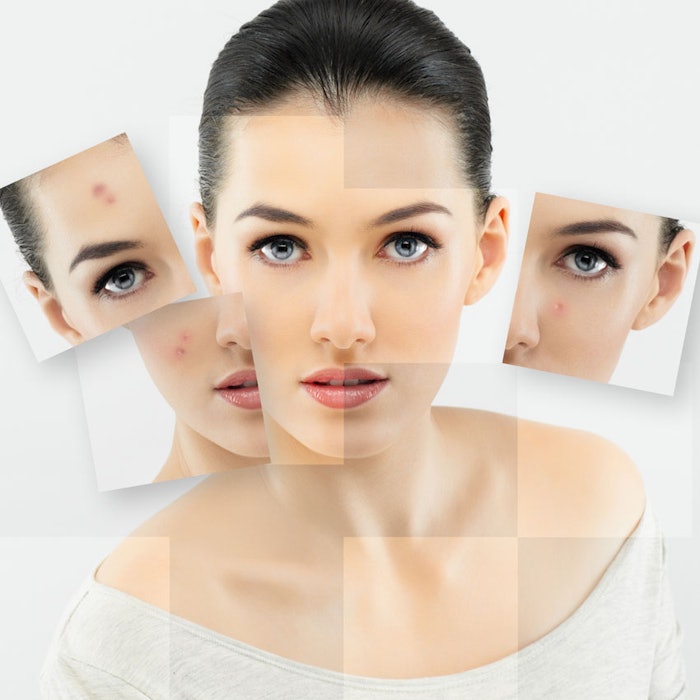
It's not every year that the likes of the European Society for Investigative Dermatological Research, the Japanese Society for Investigative Dermatology and the U.S.-based Society for Investigative Dermatology come together under one roof. In fact, it's been every five years. Add to this various other investigative dermatology and cutaneous biological societies and you've got more "skin in the game" than anywhere I can think of.
Indeed, the three main societies are taking it up a notch and in 2023 (five more years), all will merge to form the International Societies for Investigative Dermatology, whose inaugural meeting will be held somewhere in Asia/Oceania. (Details forthcoming).
Why should this matter to cosmetic formulators? Because these groups are a hotbed of forward-looking innovation for future product concepts.
A Look Ahead
According to Simon Craw, head of R&D Business Development for Rodan + Fields, this event gives companies a look upstream.
"This is a very scientifically focused conference," says Craw. "It's not really a conference on product development, it's focused on upstream scientific innovation. It's very useful to us to see what the latest developments are in terms of delivery systems, or in our understanding of the skin; for example, the microbiome. It also tells us where the latest developments are occurring and what universities are doing. It's really a center for innovation."
Notably, Rodan + Fields supports this innovation financially, e.g., as a sponsor of the poster session. (Full disclosure: With no strings attached).
Emerging Concepts
Clinical studies were presented on familiar skin conditions including acne, eczema, psoriasis and rosacea, in addition to skin cancer. A session on research in cutaneous surgery considered scarring and how it impacts the quality of life; superficial chemical peel vs. laser treatment of melasma; improving the appearance of pigmentation; and topical treatment of acne-induced post-inflammatory hyperpigmentation.
In addition, the American Acne and Rosacea Society held a mini-symposium to address these specific skin needs. The acne microbiome was of particular interest, as were inflammatory responses related to acne; a look at lactose intolerance and acne frequency; and new targets to address rosacea.
The International Society for Cutaneous Lymphoma also held a symposium to search for new answers in the treatment of lymphoma. Proteins and vitamins were of particular interest. The Lilly Symposium focused on psoriasis and its management, whereas the Medical Dermatology Society directed attention to the blistering skin condition known as pemphigoid.
The Plenary Session hit on a variety of topics, ranging from T cells in skin and inflammation to deciphering vitiligo and microbiome therapy for atopic dermatitis. Approaches to hair follicle stimulation and enhancing epithelial homeostasis were also addressed.
Amidst the clinical work, trends in treatment, immunology, gene expression, epidemiology and outcomes emerged. For example, an entire session was focused on Janus Kinase inhibitors (JAK inhibitors), which have been implicated for the treatment of psoriasis, skin irritation and even alopecia.
Industry Integration
While the vast majority of the IID presenters and attendees hailed from dermatological practices and universities, i.e., pure "research" settings, the society is making strides to get industry more involved; after all, many finished goods companies help fund the research. The names and faces of familiar, forward-thinking firms like Rodan + Fields, Mary Kay, Amway, Lilly, Galderma, Shiseido, The Estée Lauder Companies, Merck and Pfizer were present and participated in various ways.
The Estée Lauder Companies, for example, highlighted several research projects in the poster session. One focused on anti-aging skin care and showed how skin cells can “see” through opsins, which control circadian rhythm through their sensitivity to blue light. Another related to the importance of autophagy in skin cells, whose loss with age reduces skin's ability to cope with environmental stress. Still, another demonstrated the impact of ozone pollution on skin, as it is known to damage lipids and is believed to affect the main repair mechanisms of skin, such as circadian rhythm and autophagy.
In a different approach, Mary Kay Inc. will be hosting a symposium focused on pollution and skin. The company recently announced its four keynote speakers: Liang Liu, M.D. assistant professor of dermatology at Columbia University; Max Costa, M.D., professor and chairman of the department of environmental medicine at the New York University School of Medicine; Jean Krutmann, M.D., chair of environmental medicine at the medical faculty of Heinrich Heine University, Düsseldorf, and director of the Leibniz Research Institute of Environmental Medicine in Dusseldorf, Germany; and Wendy Roberts, M.D., associate at Stanford University and founding director of dermatopathology at the Loma Linda University Medical Center in California.
These presenting scholars are prominent leaders in the fields of environmental dermatology (note new buzzword), generational and ethnic dermatology, as well as epidemiologic dermatology, among others. They will discuss the impact of external environmental agents on the skin, and how antioxidants can help to reduce the damaging effects of pollution.
Under Embargo
As an aside, much of the research presented at the IID event is highly guarded—and for good reason. As such, Cosmetics & Toiletries will be following journalistic standards and ethics to give you a flavor of the event without the full entrée. This means no photos or video from the presentations; although some exclusive interviews are currently in the works. Just like technology scouts sampling what's here, we'll be cooking up new concepts for you from what we've seen and heard. Stick with us.










